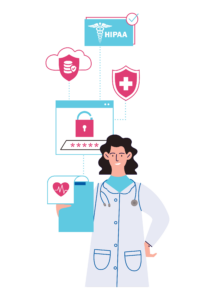Learn the essentials of South Africa's POPIA, its impact on data protection, and how it compares to global privacy laws.
GRC Tool
What is GRC?
GRC stands for Governance, Risk Management, and Compliance. It is a framework used to ensure that an organization efficiently manages risk and complies with relevant regulations and laws. GRC compliance includes processes such as internal audits, policies and procedures, training programs, monitoring systems, and reporting systems. GRC (Governance, Risk and Compliance) is a framework for ensuring that organizations are managed in an ethical and compliant manner. GRC risk compliance helps to ensure that the organization meets legal, regulatory, and industry standards while also protecting itself from potential risks. It is essential for any business to have a robust GRC strategy in place so it can identify, assess, manage and monitor its risks on an ongoing basis. Additionally, having this type of program helps organizations demonstrate their commitment to responsible business practices which can help build trust with customers and partners.
What is a GRC tool?
GRC (Governance, Risk Management, and Compliance) tools are software applications that help organizations manage their risk management, compliance, and governance processes. These tools enable businesses to automate the process of identifying risks and ensuring compliance with regulations. They also provide a platform for monitoring progress and developing strategies to reduce risk exposure.
What is GRC tool implementation?
GRC (Governance, Risk Management, and Compliance) tool implementation is the process of integrating software tools into an organization’s existing processes to support its governance, risk management, and compliance activities. GRC tools enable organizations to identify, measure and monitor risks associated with operations while helping them comply with applicable regulations. The implementation of GRC tools can help organizations improve visibility into their operations, automate manual processes and identify areas for improvement in order to reduce costs.
How to select a GRC tool?
1. Identify GRC requirements
The first step in implementing a GRC tool is to identify the specific needs of your organization and determine which areas you need to address with a GRC tool. Consider factors such as regulatory compliance, risk management, internal audit processes, data privacy and security policies.
2. Select a solution
Once you have identified your needs, it’s time to select an appropriate GRC software solution that meets them. Research available solutions on the market and compare features such as user interface design, reporting capabilities, scalability options and integration with existing systems or applications.
3. Plan implementation
After selecting a suitable solution for your organization’s needs, develop an implementation plan outlining how the GRC tool will be deployed and rolled out. Consider factors such as the timeline for implementation, the resources required, user training and data migration from existing systems.
4. Test and deploy
Before launching the GRC software solution in production, ensure that it is thoroughly tested to identify any potential issues or bugs that need to be addressed before deployment. Once all testing is complete, roll out the solution across your organization according to your implementation plan.
5. Monitor results
After deploying a GRC tool in production, closely monitor its performance to ensure it meets expectations and delivers value to your organization over time. Review reports generated using the system on a regular basis and make adjustments as needed based on feedback from users or changes in industry regulations or standards.
What are common GRC tools?
1. Risk management software
GRC risk management software helps organizations identify, assess, and manage risk across their operations. It can also provide reporting and analytics to help visualize the risks and track progress in addressing them. One example of GRC tools for risk management is a Risk Management Information System (RMIS). RMIS provides organizations with the ability to track, monitor, and report on risks across the enterprise. It can be used to identify potential risks, assess their impact, and develop strategies for mitigating those risks. Additionally, an RMIS can provide information about compliance requirements and help ensure that relevant policies are adhered to.
2. Compliance management software
This type of software helps organizations meet compliance requirements with regulators, standards, or other internal policies by automating monitoring processes, tracking changes in laws and regulations, producing reports for auditing purposes, and managing corrective actions when necessary.
3. Policy management software
This type of software enables organizations to create, store, distribute and track policies related to regulatory compliance, information security or corporate governance initiatives within an organization.
4. Business Continuity Planning (BCP) software
This type of software helps organizations plan for and manage disruptions to their operations, including those caused by natural disasters, cyberattacks, or other unforeseen events.
5. Audit management software
This type of software helps organizations conduct internal audits related to compliance with laws and regulations, as well as financial accounting processes. It can also provide reporting tools that help visualize audit results and track progress in addressing any issues identified during the audit process.







